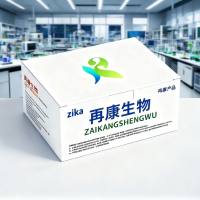Behavioral Measures of Pain Thresholds
互联网
- Abstract
- Table of Contents
- Materials
- Figures
- Literature Cited
Abstract
Pain afflicts a fifth of the population, and animal models have proven useful in target validation and analgesic drug development. Thresholds to pain are tested by applying a sensory stimulus, such as heat or pressure, and observing the resulting withdrawal behavior. Sensitized pain models involve provoking an inflammatory response or damaging the nerves themselves, and testing the changes in pain threshold. In this article, mouse models of acute mechanical and thermal pain and inflammatory, visceral, and neuropathic pain are discussed. These behavioral measures can be used to phenotype transgenic mice for target validation and mechanistic studies, as well as to screen potential analgesic compounds. Curr. Protoc. Mouse Biol. 1:383?412 © 2011 by John Wiley & Sons, Inc.
Keywords: nociception; reflex; pain; neuropathic; inflammatory; visceral
Table of Contents
- Introduction
- Strategic Planning
- Testing Thresholds to Thermal Stimuli
- Basic Protocol 1: Radiant Heat Tail‐Flick
- Alternate Protocol 1: Hot Water Immersion Tail‐Flick
- Alternate Protocol 2: Cold Water Immersion Tail‐Flick
- Basic Protocol 2: Hot Plate: Nociceptive Response to Noxious Heat
- Basic Protocol 3: Cold Plate: Noxious Cold
- Basic Protocol 4: Hargreaves' Test: Withdrawal Threshold to Noxious Heat
- Support Protocol 1: Alternative Measurement for Hargreaves' Apparatus
- Basic Protocol 5: Acetone Evaporation Test: Innocuous Cooling and Cold Allodynia
- Testing Thresholds to Mechanical Stimuli
- Basic Protocol 6: Von Frey Test: Light Touch Perception Threshold
- Support Protocol 2: Repeated Measures Von Frey Test
- Alternate Protocol 3: Automatic Von Frey Test
- Basic Protocol 7: Randall‐Selitto Test: Noxious Mechanical Pressure
- Alternate Protocol 4: Digital Paw Pressure Test
- Inflammatory Pain
- Basic Protocol 8: Mechanical and/or Thermal Hyperalgesia in the Hindpaw
- Alternate Protocol 5: Spontaneous Inflammatory Pain
- Visceral Pain
- Basic Protocol 9: Intracolonic Administration of Irritants
- Support Protocol 3: Von Frey Hair
- Neuropathic Pain: Hyperalgesic Allodynia Mediated by Peripheral Nerve Damage
- Basic Protocol 10: Chronic Constriction Injury (CCI): Loose Ligation of the Sciatic Nerve
- Alternate Protocol 6: Seltzer: Partial Ligation of the Sciatic Nerve
- Alternate Protocol 7: Spinal Nerve Ligation (SNL)
- Commentary
- Literature Cited
- Figures
- Tables
Materials
Basic Protocol 1: Radiant Heat Tail‐Flick
Materials
Alternate Protocol 1: Hot Water Immersion Tail‐Flick
Alternate Protocol 2: Cold Water Immersion Tail‐Flick
Materials
Basic Protocol 2: Hot Plate: Nociceptive Response to Noxious Heat
Materials
Basic Protocol 3: Cold Plate: Noxious Cold
Materials
Basic Protocol 4: Hargreaves' Test: Withdrawal Threshold to Noxious Heat
Materials
Support Protocol 1: Alternative Measurement for Hargreaves' Apparatus
Materials
Basic Protocol 5: Acetone Evaporation Test: Innocuous Cooling and Cold Allodynia
Materials
Basic Protocol 6: Von Frey Test: Light Touch Perception Threshold
Materials
Support Protocol 2: Repeated Measures Von Frey Test
Materials
Alternate Protocol 3: Automatic Von Frey Test
Materials
Basic Protocol 7: Randall‐Selitto Test: Noxious Mechanical Pressure
Materials
Alternate Protocol 4: Digital Paw Pressure Test
Materials
Basic Protocol 8: Mechanical and/or Thermal Hyperalgesia in the Hindpaw
Alternate Protocol 5: Spontaneous Inflammatory Pain
Materials
Basic Protocol 9: Intracolonic Administration of Irritants
Support Protocol 3: Von Frey Hair
|
Figures
-
Figure 1. Mouse in a restrainer. View Image -
Figure 2. Acetone applicator. View Image -
Figure 3. Mouse paw. Circle indicates the area of the plantar surface of the paw to be stimulated (e.g., with von Frey hair), as well as the site for intraplantar injection. Scale bar = 1 mm. View Image -
Figure 4. CCI and Seltzer diagram. View Image -
Figure 5. SNL diagram. View Image -
Figure 6. Glass hook for surgery. Scale bar = 1 mm. View Image
Videos
Literature Cited
| Literature Cited | |
| Abrahamsen, B., Zhao, J., Asante, C.O., Cendan, C.M., Marsh, S., Martinez‐Barbera, J.P., Nassar, M.A., Dickenson, A.H., and Wood, J.N. 2008. The cell and molecular basis of mechanical, cold, and inflammatory pain. Science 321:702‐705. | |
| Baertschi, B. and Gyger, M. 2011. Ethical considerations in mouse experiments. Curr. Protoc. Mouse Biol. 1:155‐167. | |
| Ben‐Bassat, J., Peretz, E., and Sulman, F.G. 1959. Analgesimetry and ranking of analgesic drugs by the receptacle method. Arch. Int. Pharmacodyn. Ther. 122:434‐447. | |
| Bennett, G.J. 1994. Neuopathic Pain. pp 201‐224. Churchill Livingstone, London. | |
| Bennett, G.J. and Xie, Y.K. 1988. A peripheral mononeuropathy in rat that produces disorders of pain sensation like those seen in man. Pain 33:87‐107. | |
| Callahan, B.L., Gil, A.S.C., Levesque, A., and Mogil, J.S. 2008. Modulation of mechanical and thermal nociceptive sensitivity in the laboratory mouse by behavioral state. J. Pain 9:174‐184. | |
| Chaplan, S.R., Bach, F.W., Pogrel, J.W., Chung, J.M., and Yaksh, T.L. 1994. Quantitative assessment of tactile allodynia in the rat paw. J. Neurosci. Methods 53:55‐63. | |
| Chapman, C.R., Casey, K.L., Dubner, R., Foley, K.M., Gracely, R.H., and Reading, A.E. 1985. Pain measurement: An overview. Pain 22:1‐31. | |
| Chesler, E.J., Wilson, S.G., Lariviere, W.R., Rodriguez‐Zas, S.L., and Mogil, J.S. 2002. Influences of laboratory environment on behavior. Nat. Neurosci. 5:1101‐1102. | |
| Chuang, H., Prescott, E.D., Kong, H., Shields, S., Jordt, S.E., Basbaum, A.I., Chao, M.V., and Julius, D. 2001. Bradykinin and nerve growth factor release the capsaicin receptor from PtdIns(4,5)P2‐mediated inhibition. Nature 411:957‐962. | |
| Coderre, T.J., Vaccarino, A.L., and Melzack, R. 1990. Central nervous system plasticity in the tonic pain response to subcutaneous formalin injection. Brain Res. 535:155‐158. | |
| Couture, R., Harrisson, M., Vianna, R.M., Cloutier, F. 2001. Kinin receptors in pain and inflammation. Eur. J. Pharmacol. 429:161‐176. | |
| Crunkhorn, P. and Meacock, S.C. 1971. Mediators of the inflammation induced in the rat paw by carrageenin. Br. J. Pharmacol. 42:392‐402. | |
| Cunha, F.Q., Poole, S., Lorenzetti, B.B., and Ferreira, S.H. 1992. The pivotal role of tumour necrosis factor alpha in the development of inflammatory hyperalgesia. Br. J. Pharmacol. 107:660‐664. | |
| D'Amour, F.E. and Smith, D.L. 1941. A method for determining loss of pain sensation. J. Pharmacol. Exp. Ther. 72:74‐79. | |
| Dixon, W.J. 1980. Efficient analysis of experimental observations. Annu. Rev. Pharmacol. Toxicol. 20:441‐462. | |
| Eddy, N.B. and Leimbach, D. 1953. Synthetic analgesics. II. Dithienylbutenyl‐ and dithienylbutylamines. J. Pharmacol. Exp. Ther. 107:385‐393. | |
| Gray, J.A . 1978. The neuropsychology of anxiety. Br. J. Psychol. 69:417‐434. | |
| Hargreaves, K., Dubner, R., Brown, F., Flores, C., and Joris, J. 1988. A new and sensitive method for measuring thermal nociception in cutaneous hyperalgesia. Pain 32:77‐88. | |
| Kim, S.H. and Chung, J.M. 1992. An experimental model for peripheral neuropathy produced by segmental spinal nerve ligation in the rat. Pain 50:355‐363. | |
| Laird, J.M.A., Martinez‐Caro, L., Garcia‐Nicas, E., and Cervero, F. 2001. A new model of visceral pain and referred hyperalgesia in the mouse. Pain 92:335‐342. | |
| Larson, A.A., Brown, D.R., el‐Atrash, S., and Walser, M.M. 1986. Pain threshold changes in adjuvant‐induced inflammation: A possible model of chronic pain in the mouse. Pharmacol. Biochem. Behav. 24:49‐53. | |
| Lee, D.E., Kim, S.J., and Zhuo, M. 1999. Comparison of behavioral responses to noxious cold and heat in mice. Brain Res. 845:117‐121. | |
| Macdonald, A.D., Woolfe, G., Bergel, F., Morrison, A.L., and Rinderknecht, H. 1946. Analgesic action of pethidine derivatives and related compounds. Br. J. Pharmacol. Chemother. 1:4‐14. | |
| McNamara, C.R., Mandel‐Brehm, J., Bautista, D.M., Siemens, J., Deranian, K.L., Zhao, M., Hayward, N.J., Chong, J.A., Julius, D., Moran, M.M., and Fanger, C.M. 2007. TRPA1 mediates formalin‐induced pain. Proc. Natl. Acad. Sci. U.S.A. 104:13525‐13530. | |
| Meller, S.T. and Gebhart, G.F. 1997. Intraplantar zymosan as a reliable, quantifiable model of thermal and mechanical hyperalgesia in the rat. Eur. J. Pain 1:43‐52. | |
| Mogil, J.S., Wilson, S.G., Bon, K., Lee, S.E., Chung, K., Raber, P., Pieper, J.O., Hain, H.S., Belknap, J.K., Hubert, L., Elmer, G.I., Chung, J.M., and Devor, M . 1999. Heritability of nociception I: responses of 11 inbred mouse strains on 12 measures of nociception. Pain 80:67‐82. | |
| Mogil, J., Wilson, S., and Wan, Y. 2001. Assessing nociception in murine subjects. In Methods in Pain Research ( L. Kruger, ed.) pp. 11‐40. CRC Press, Boca Raton, Fla. | |
| Pizziketti, R.J., Pressman, N.S., Geller, E.B., Cowan, A., and Adler, M.W. 1985. Rat cold water tail‐flick: A novel analgesic test that distinguishes opioid agonists from mixed agonist‐antagonists. Eur. J. Pharmacol. 119:23‐29. | |
| Rácz, I. and Zimmer, A. 2006. Animal Models of Nociception. Wiley‐VCH Verlag GmbH, Weinheim, Germany. | |
| Randall, L.O. and Selitto, J.J. 1957. A method for measurement of analgesic activity on inflamed tissue. Arch. Int. Pharmacodyn. Ther. 111:409‐419. | |
| Rosland, J.H., Tjlsen, A., Mühle, B.R., and Hole, K. 1990. The formalin test in mice: Effect of formalin concentration. Pain 42:235‐242. | |
| Seltzer, Z., Dubner, R., and Shir, Y. 1990. A novel behavioral model of neuropathic pain disorders produced in rats by partial sciatic nerve injury. Pain 43:205‐218. | |
| Slugg, R.M., Meyer, R.A., and Campbell, J.N. 2000. Response of cutaneous A‐ and C‐fiber nociceptors in the monkey to controlled‐force stimuli. J. Neurophysiol. 83:2179‐2191. | |
| Southall, M.D. and Vasko, M.R. 2000. Prostaglandin E(2)‐mediated sensitization of rat sensory neurons is not altered by nerve growth factor. Neurosci. Lett. 287:33‐36. | |
| Taiwo, Y.O., Goetzl, E.J., and Levine, J.D. 1987. Hyperalgesia onset latency suggests a hierarchy of action. Brain Res. 423:333‐337. | |
| Takesue, E.I., Schaefer, W., and Jukniewicz, E. 1969. Modification of the Randall‐Selitto analgesic apparatus. J. Pharm. Pharmacol. 21:788‐789. | |
| Vetulani, J., Castellano, C., Lasón, W., and Oliverio, A. 1988. The difference in the tail‐flick but not hot‐plate response latency between C57BL/6 and DBA/2J mice. Pol. J. Pharmacol. Pharm. 40:381‐385. | |
| Wang, S., Dai, Y., Fukuoka, T., Yamanaka, H., Kobayashi, K., Obata, K., Cui, X., Tominaga, M., and Noguchi, K. 2008. Phospholipase C and protein kinase A mediate bradykinin sensitization of TRPA1: A molecular mechanism of inflammatory pain. Brain 131:1241‐1251. | |
| Zimmermann, K., Leffler, A., Babes, A., Cendan, C.M., Carr, R.W., Kobayashi, J., Nau, C., Wood, J.N., and Reeh, P.W. 2007. Sensory neuron sodium channel Nav1.8 is essential for pain at low temperatures. Nature 447:855‐858. |







